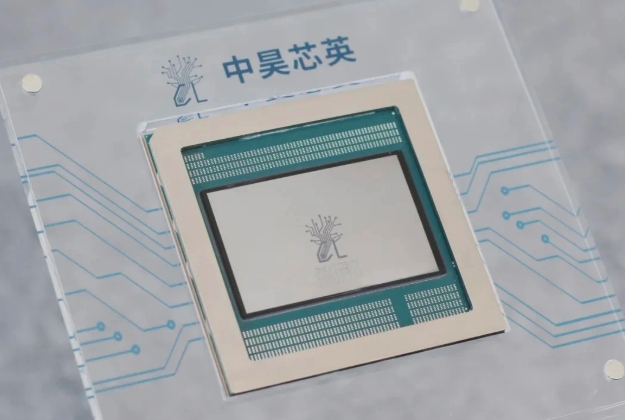As a global leader in analog and embedded semiconductors, Texas Instruments (TI) boasts a robust product portfolio that spans analog chips, embedded processors, power management solutions, functional safety technologies, and educational tools. Serving industries from industrial automation and automotive to consumer electronics, communications, and enterprise systems, TI’s innovations underpin the functionality of countless modern devices. Let’s delve into the details of its key product lines, market positioning, and strategic influence.

I. Analog Semiconductors: The Cornerstone of TI’s Business
Analog semiconductors form the backbone of TI’s revenue, accounting for 74% of its total income in 2023—approximately $13.04 billion. These chips are critical for signal processing and power management, with applications ranging from tiny sensors to large industrial systems. They are categorized into two primary segments: signal chain and power management.
1. Signal Chain: Bridging the Analog-Digital Divide
Signal chain chips act as translators between the physical world (analog signals like sound, temperature, and pressure) and digital systems, enabling precise data conversion and processing. TI’s signal chain portfolio is renowned for its precision, diversity (over 80,000 devices), and adaptability to niche markets.
-
Amplifiers: TI dominates the global amplifier market with a 29% share, offering a vast range including operational amplifiers (op-amps), comparators, and current-sense amplifiers. For example, the OPA2188, a high-precision op-amp with low noise (1.1nV/√Hz) and drift (0.1μV/°C), is widely used in medical devices like ECG machines to amplify faint bioelectric signals. In industrial settings, the INA219 current-sense amplifier enables accurate power monitoring in factory automation systems.
-
Data Converters: TI ranks second globally in data converters (behind ADI), with ADCs and DACs that excel in speed and resolution. The ADS54J60, a 16-bit, 1GSPS ADC, is pivotal in 5G base stations, converting high-frequency radio signals into digital data for processing. For automotive radar, the DAC38J84, a 16-bit, 9GSPS DAC, generates precise analog waveforms to enhance object-detection accuracy.
-
Interface Products: These facilitate communication between disparate systems, with standout products like the SN75176 (RS-485 transceiver) for industrial networks and the TCAN1042 (CAN transceiver) for automotive in-vehicle networks (IVNs). The USB2514, a USB hub controller, is integral to consumer electronics, enabling multiple device connections in laptops and smart TVs.
-
Sensors: TI’s sensors include temperature sensors (e.g., TMP102, with ±0.5°C accuracy), current sensors (e.g., ACS712 for motor current monitoring), and optical sensors (e.g., OPT3001 for ambient light sensing in smartphones). These are foundational in IoT devices, where they collect environmental data for smart homes and industrial monitoring.
2. Power Management: Efficiency at the Core
Power management chips (PMICs) represent 42% of the global analog market (≈$21.6 billion), with TI holding a 21% share. These chips optimize energy usage, extending battery life in portable devices and enhancing reliability in industrial systems.
-
Battery Management: TI’s BQ series is a staple in energy storage, from smartphones to electric vehicles (EVs). The BQ25703A, a battery charger, supports fast charging for lithium-ion batteries in laptops, while the BQ79616, a battery monitoring IC, manages cell balancing in EV battery packs, ensuring safety and longevity.
-
Power Converters:
- DC/DC Switching Regulators: The TPS62085, a 3A step-down converter, delivers 95% efficiency in compact designs (3mm×3mm), making it ideal for wearables and IoT sensors. The TPS63070, a buck-boost converter, maintains stable power in devices with fluctuating input voltages, such as portable medical monitors.
- AC/DC Controllers: The UCC28780, an active-clamp flyback controller, enables high-efficiency power adapters for laptops, reducing energy waste.
- Linear Regulators (LDOs): The TPS7A4700, a low-noise LDO, provides clean power to sensitive components like RF transceivers in communication devices.
-
Market Trends: Driven by automotive electrification and industrial automation, the global PMIC market is projected to reach $56.5 billion by 2026. China, a key growth hub, will account for $20 billion by 2025, with a 15.4% CAGR—TI is capitalizing on this via localized production and tailored solutions for EV and renewable energy sectors.
II. Embedded Processing: Powering Intelligent Control
TI’s embedded processors, generating $3.34 billion in 2023 (19% of revenue), enable computation, real-time control, and connectivity in diverse applications.

-
Microcontrollers (MCUs): TI’s MCUs cover low-power, high-performance, and wireless segments, with a 10% global market share.
- MSP430: Ultra-low-power 16-bit MCUs (e.g., MSP430FR5994) with 0.1μA standby current power battery-operated devices like smart water meters, extending operational life to 10+ years.
- SimpleLink: Wireless MCUs (e.g., CC3235SF) integrate Wi-Fi, Bluetooth LE, and Sub-1GHz connectivity, powering smart thermostats and industrial sensors in IoT networks.
- C2000: 32-bit real-time MCUs (e.g., TMS320F280049) excel in motor control—they regulate servo motors in industrial robots with microsecond-level precision, enabling smooth, accurate movements.
-
Digital Signal Processors (DSPs): TI’s DSPs lead in signal processing, with architectures optimized for audio, video, and radar.
- C6000: High-performance DSPs (e.g., TMS320C6678) process 4G/5G baseband signals, supporting multi-gigabit data rates.
- C5000: Low-power DSPs (e.g., TMS320C5535) power portable audio devices, enhancing sound quality in wireless headphones.
- DaVinci: The TMS320DM8168, combining DSP and ARM cores, enables HD video encoding/decoding in security cameras and video conferencing systems.
-
Application Processors:
- Sitara: ARM Cortex-A-based processors (e.g., AM625) support industrial protocols like EtherCAT and PROFINET, making them ideal for human-machine interfaces (HMIs) in factory automation.
- Jacinto: Automotive-grade processors (e.g., TDA4VM) drive advanced driver-assistance systems (ADAS) and autonomous driving, with AI accelerators for real-time object recognition. They comply with ASIL-B to ASIL-D safety standards, critical for vehicle reliability.
III. Other Key Product Lines
Beyond analog and embedded chips, TI offers specialized technologies that reinforce its market leadership.
-
DLP Technology: Based on Digital Micromirror Devices (DMDs), DLP powers projectors, automotive head-up displays (HUDs), and 3D scanners. In automotive HUDs, DLP chips (e.g., DLP3020) project navigation and safety alerts onto windshields with high brightness (up to 10,000 nits) and contrast, ensuring visibility in direct sunlight. TI holds a 60% share in the automotive HUD market, thanks to this technology.
-
Functional Safety Solutions: TI’s products comply with ISO 26262 (automotive) and IEC 61508 (industrial), with MCUs, processors, and analog chips certified for safety-critical applications. For example, the Hercules TMS570 MCU series (ASIL-D certified) ensures reliable operation in automotive braking systems, while the AMC1301 isolation amplifier (SIL-3 certified) protects industrial sensors from high-voltage hazards.
IV. TI’s Market Strategy and Competitive Landscape
TI’s strength lies in its product breadth, technical depth, and customer-centric approach:
- Product Diversity: With 80,000+ devices, TI caters to everything from low-cost consumer electronics to high-reliability aerospace systems.
- Technical Leadership: Innovations like low-power design (MSP430), functional safety certification (Jacinto), and development tools (Code Composer Studio) foster customer loyalty.
- Regional Focus: China, contributing 25% of TI’s revenue, benefits from localized support (Shanghai/Shenzhen design centers) and strategic pricing—TI reduced prices for select PMICs in 2023 to counter Chinese competitors.
For Chinese semiconductor firms (e.g., SGMICRO, GigaDevice), catching up requires:
- Technical Differentiation: Prioritizing high-precision ADCs/DACs and automotive-grade PMICs to narrow gaps with TI.
- Cost Optimization: Leveraging domestic 8-inch wafers and streamlined supply chains to offer competitive pricing.
- Ecosystem Building: Developing SDKs, reference designs, and technical support to match TI’s E2E community.
ICgoodFind Summary
TI’s comprehensive product ecosystem—spanning analog chips, embedded processors, and specialized technologies—continues to shape industries worldwide. At ICgoodFind, we connect customers with TI’s cutting-edge solutions, from high-precision amplifiers for medical devices to ADAS processors for smart vehicles. Our expertise in supply chain management ensures reliable access to TI’s products, backed by technical insights to support seamless integration. Whether for industrial automation, automotive innovation, or consumer electronics, we bridge TI’s technological excellence with real-world application needs.










